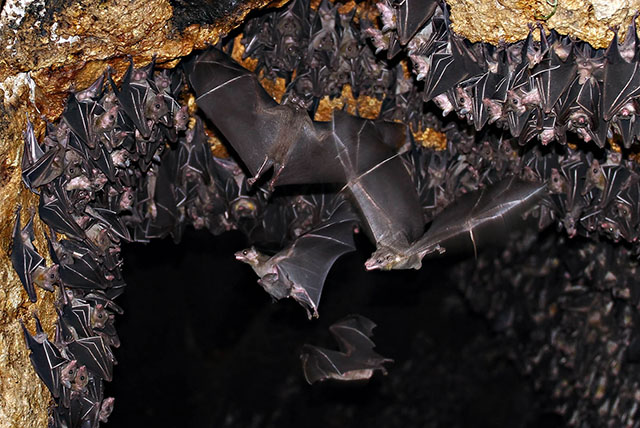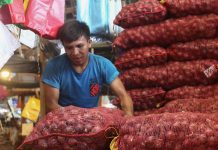
No.1 eco-tourism attraction
Fruit bats could become the primary eco-tourism attractions in the Davao Region but conservationists warned there must be a stricter measure to control the unsupervised tourism activities that may endanger the population of the bats.
The Monfort Bat Cave in Samal. MindaNews file photo by ERWIN MASCARINAS
Mylea Bayless, senior director for Network and Partnerships of Bat Conservation International, said during Kapehan sa Dabaw on Monday that the so called “bat tourism” could be very profitable and safe if done properly but the people must deepen their appreciation for these creatures to effectively protect them from destructive human activities.
“It’s very important that bats aren’t disturbed, that we are quiet, and that nobody is allowed in the cave,” she said.
Bayless said that they support efforts that would encourage people to work for the conservation of population of bats by not harassing and hunting them for food because unlike other small mammals, “bats can’t reproduce quickly.”
“That population grows very, very slowly. They only have one pup per year. Not like small mammals, they can’t reproduce quickly. The population is very slow to rebound if the cave is not respected,” she added.
Bayless said it’s important for tourists visiting the caves to avoid unnecessary noise because the mothers can drop the young that would result to their death once disturbed.
She said that “bat tourism” in Austin, Texas draws several tourists to watch the Mexican free-tailed bats emerging from their colony, bringing about annual revenues of $3 million into the economy.
“It’s a very profitable opportunity and one more thing about that is that when the bats are appreciated, when the community embraces the bats as part of their local culture and local tourism, the more they will be protected in the long term,” Bayless said.
“The key is to help people understand and appreciate the value of bats. So once people are curious about bats, they appreciate what the bats do for their food supply, and how interesting and delicate they are, and how important they are to the Philippines and to the people of Davao,” she added.
Bayless said there are still a lot of endangered bat species in the country that need protection. She commended the Department of Environment and Natural Resources for taking the initiative in declaring the roosts, most especially of the flying fox species, as sanctuaries and initiating monitoring program to approximate their population.
She said that they have been helping the Monfort Bat Cave & Conservation Foundation, Inc. for 12 years for the conservation of the Monfort Bat Cave, which holds the title as the largest single colony of Rousette Fruit Bat in Guinness Book of World Records by providing information and education materials to conduct research project at the cave, to assess the population and cave itself, and advice and guidance on how to develop the cave for tourism without jeopardizing the bats.
The bat cave, located at a three-hectare property in Barangay Tambo, Babak, Island Garden City of Samal, houses 2.3 million of Rousette fruit bats. (MINDANEWS)






